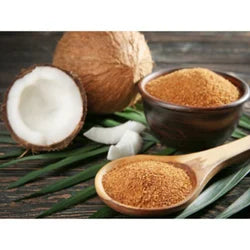Black Forest honey is one of the most sought-after varieties of honey. It is known for its deep colour, rich taste, and numerous health benefits. However, its price is significantly higher compared to regular honey. But why is Black Forest honey so expensive? Let’s explore the reasons behind its premium cost.
1. Sourced from Dense Forests
Black Forest honey, also known as wild forest honey, is not collected from regular flower nectar. Instead, it comes from the honeydew excreted by aphids feeding on trees. Bees collect this honeydew, process it, and create a unique type of honey rich in minerals and antioxidants. Since it is primarily sourced from deep, undisturbed forests, the collection process is labor-intensive and time-consuming.
2. Limited Availability
Unlike regular honey, which comes from widespread flower sources, forest wild honey is seasonal and depends on specific environmental conditions. The honeydew secretion occurs in limited periods, making the harvest unpredictable. This scarcity adds to the cost of production and, ultimately, the price.
3. High Nutritional Value
Black Forest honey is packed with minerals, enzymes, and antioxidants. It is lower in glucose and higher in fructose, making it a healthier option. Also, it contains antibacterial properties that boost immunity. Due to its exceptional nutritional profile, natural wild forest honey is highly valued in the market.
4. Difficult Harvesting Process
Beekeepers have to navigate dense forests to collect wild forest honey. Unlike commercial honey farms, where hives are placed in controlled environments, Black Forest honey collection requires skill, patience, and effort. The process is riskier and more demanding, leading to higher labor costs.
5. Raw and Unprocessed Nature
Another reason for its high price is that it is often sold raw and unprocessed. Regular honey undergoes pasteurization and filtration, but Black Forest honey retains its natural enzymes and beneficial compounds. This enhances its medicinal properties but requires careful handling and storage, further driving up costs.
6. Ethical and Sustainable Practices
Since Black Forest honey is collected from wild bees, ethical and sustainable practices are followed to ensure minimal harm to the ecosystem. Many small-scale beekeepers rely on traditional methods, avoiding chemicals and artificial stimulants. This sustainable approach ensures high quality but comes at a higher cost.
7. Market Demand and Rarity
Consumers are becoming more aware of the benefits of natural wild forest honey. As demand rises, supply remains limited due to its natural production process. This imbalance leads to higher prices. Also, since it is not mass-produced, it retains its exclusivity and premium status.
8. Purity and Authenticity
Unlike commercial honey, which may contain added sugars or syrups, authentic wild forest honey is pure and free from adulteration. Testing and certification processes ensure its authenticity, adding to the cost.
Conclusion
Black Forest honey is expensive due to its rare sourcing, limited availability, high nutritional value, and difficult harvesting process. Also, its raw nature, ethical production, and market demand contribute to its premium price. If you want to experience the richness of this rare honey, check out Daily Farmer’s Wild Forest Honey. You can also explore more premium honey options on Amazon. Investing in high-quality honey ensures that you get the best health benefits and support sustainable beekeeping practices.



